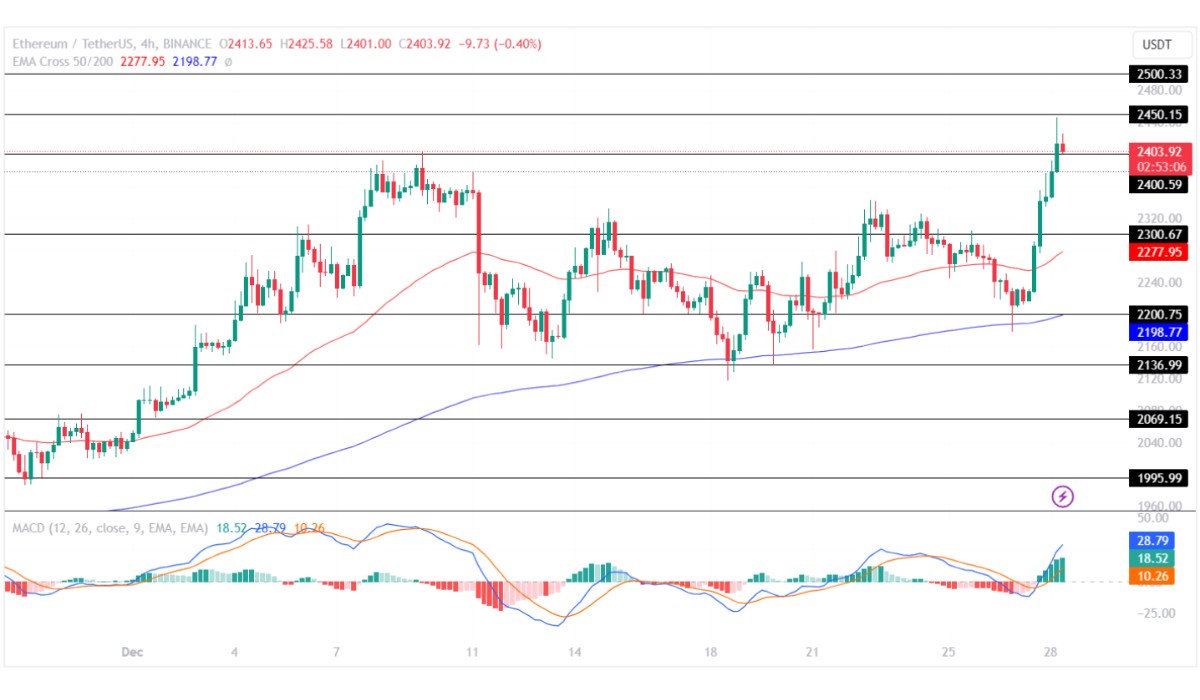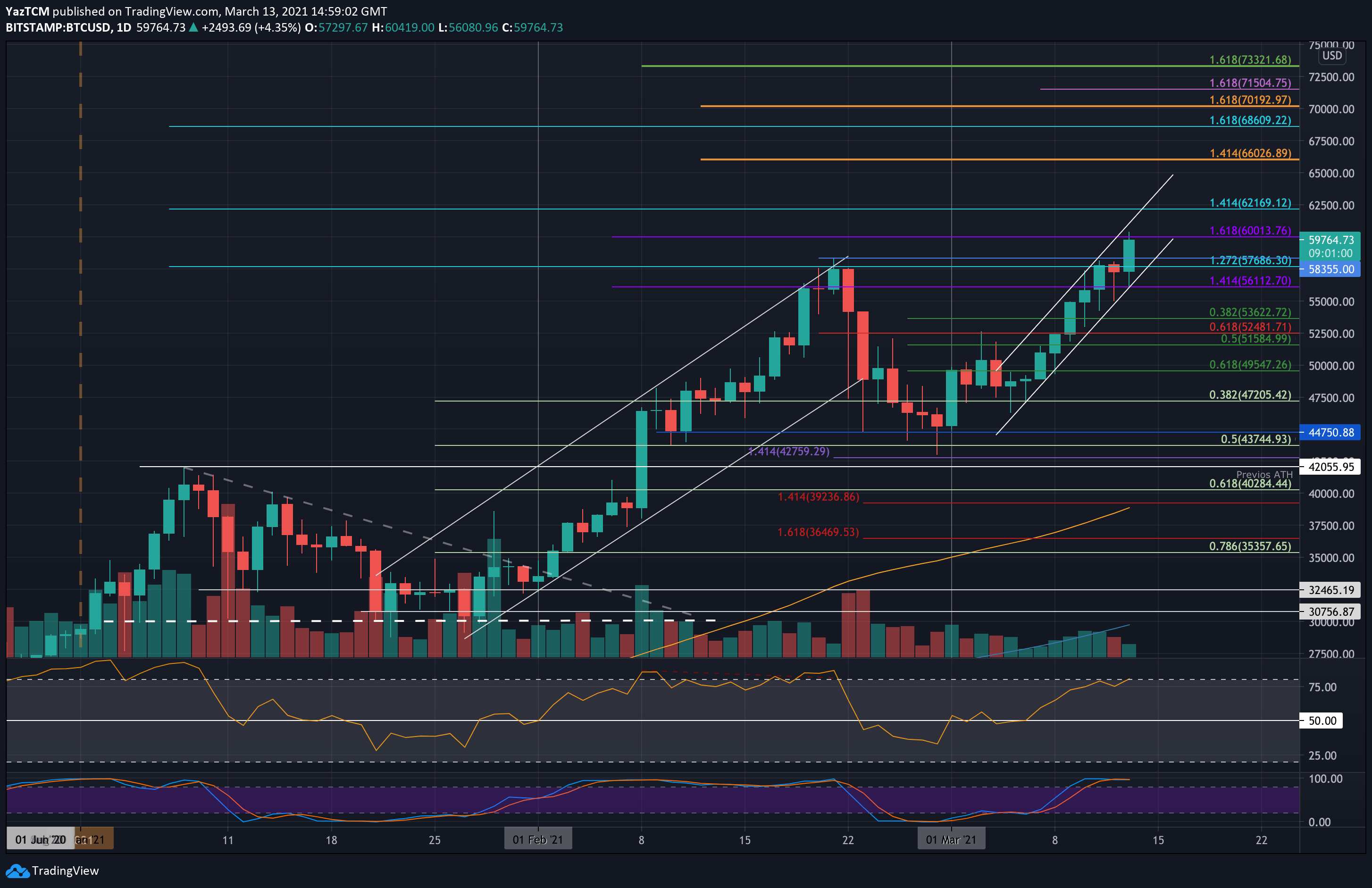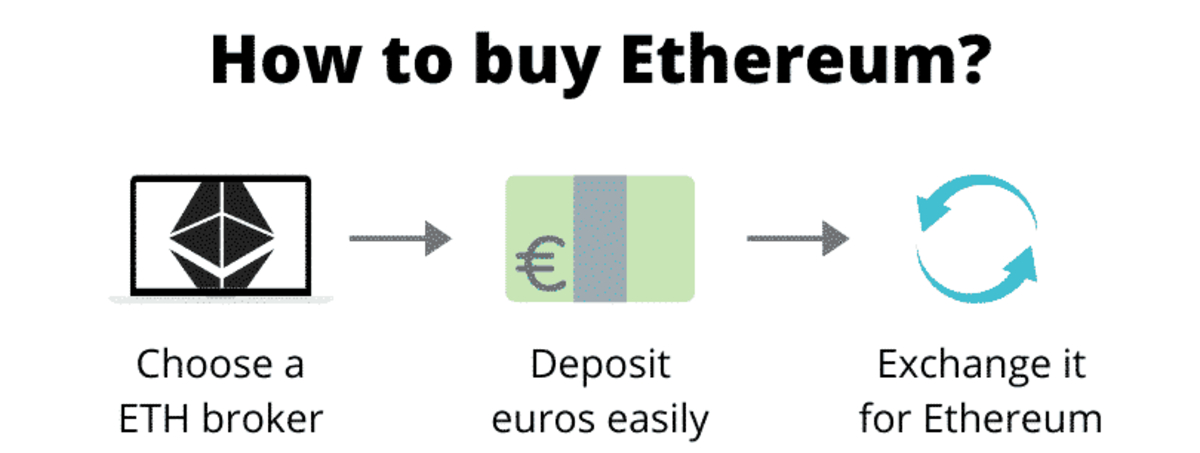Introduction
Ethereum has emerged as one of the most prominent cryptocurrencies in the market, captivating the attention of investors and enthusiasts worldwide. With its innovative blockchain technology and vast potential for decentralized applications, Ethereum has gained significant value and recognition. In this article, we will explore the journey of Ethereum’s price, from its inception to its highest recorded value.
But first, let’s understand what Ethereum is and why it holds such immense value in the cryptocurrency landscape. Ethereum is a decentralized platform that enables developers to build smart contracts and decentralized applications (DApps) on its blockchain. While Bitcoin primarily focuses on peer-to-peer digital currency, Ethereum expands beyond this to provide a scalable and versatile environment for developing various blockchain-based projects.
The value of Ethereum lies not only in its role as a digital currency but also in its ability to support robust and programmable applications. Unlike traditional centralized systems, Ethereum offers transparency, security, and immutability through the use of blockchain technology. Its Turing-complete programming language, known as Solidity, allows developers to create intricate smart contracts and DApps that can revolutionize industries such as finance, supply chain management, and even voting systems.
Since its launch in 2015, Ethereum has witnessed a remarkable rise in popularity and price. Its market capitalization has consistently positioned it as the second-largest cryptocurrency after Bitcoin. The driving force behind Ethereum’s surge in value is a combination of several factors, including the growing adoption of decentralized finance (DeFi) applications, the excitement surrounding initial coin offerings (ICOs), and the increasing interest from institutional investors.
Furthermore, Ethereum’s dedicated community of developers and contributors continuously work on improving the platform’s scalability, security, and efficiency. This ongoing development and innovation contribute to the long-term potential and sustainability of Ethereum as a valuable asset in the cryptocurrency market.
In the following sections, we will delve into the historic rise of Ethereum’s price, the various factors influencing its value, and the highest recorded price it has reached. By examining these aspects, we can gain insight into Ethereum’s significance and its potential for future growth.
What is Ethereum?
Ethereum is a decentralized blockchain platform that empowers developers to build and deploy smart contracts and decentralized applications (DApps). Created by Vitalik Buterin in 2013 and launched in 2015, Ethereum was designed to provide a robust and programmable environment for the execution of decentralized applications on its blockchain network.
While Bitcoin revolutionized the concept of digital currency, Ethereum expanded on this by introducing a more versatile approach to blockchain technology. Unlike Bitcoin, which focuses primarily on peer-to-peer transactions, Ethereum enables developers to create and deploy smart contracts – self-executing contracts with predefined rules and conditions.
Smart contracts, written in Ethereum’s custom programming language called Solidity, allow for the automation of various processes and the elimination of intermediaries. These contracts automatically execute actions once certain predetermined conditions are met, ensuring transparency, security, and trust in digital transactions.
Moreover, Ethereum offers developers a Turing-complete blockchain, meaning that any computable function can be calculated given enough time and resources. This flexibility allows developers to create highly complex and sophisticated decentralized applications that can address various real-world challenges.
One of the most significant advancements of Ethereum is the creation of Decentralized Finance (DeFi) applications. DeFi applications provide traditional financial services like lending, borrowing, and trading, but without the need for intermediaries such as banks. Instead, these services are facilitated using smart contracts, ensuring transparency and eliminating the need for trust in centralized institutions.
With its robust and adaptable platform, Ethereum has sparked a wave of innovation and revolutionized the blockchain industry. It has become the foundation for the development of numerous DApps across various sectors, including finance, gaming, supply chain management, and healthcare.
As Ethereum continues to evolve, its community of developers and contributors actively work on improving the platform’s scalability and security. The ongoing development efforts, coupled with Ethereum’s ability to provide a decentralized and programmable environment, have solidified Ethereum’s position as one of the leading blockchain platforms in the world.
Why is Ethereum valuable?
Ethereum holds significant value in the world of cryptocurrencies and blockchain technology for several reasons. Let’s explore some of the key factors that contribute to Ethereum’s value:
1. Programmable Contracts and Decentralized Applications (DApps): Ethereum’s smart contract capabilities enable developers to create programmable contracts that self-execute based on predefined conditions. This feature eliminates the need for intermediaries and centralized authorities in various industries, opening up a world of possibilities for decentralized applications. The ability to create robust and automated DApps makes Ethereum a valuable platform for innovation and disruption in numerous sectors.
2. Decentralization and Security: Ethereum operates on a decentralized network of computers, known as nodes, that collectively validate and secure the transactions and smart contracts. This distributed nature ensures that no single entity has control over the network, making Ethereum resistant to censorship and attacks. The high level of security and immutability provided by Ethereum makes it an attractive option for enterprises and individuals looking for trust and transparency in their digital transactions.
3. Ethereum Virtual Machine (EVM): Ethereum’s programmable nature is powered by the Ethereum Virtual Machine (EVM). The EVM allows developers to execute code on the Ethereum network, making it possible to create diverse applications and projects. The EVM’s flexibility and compatibility with different programming languages make Ethereum an accessible platform for developers worldwide.
4. Interoperability: Ethereum’s open architecture and standards enable interoperability with other blockchain networks. This connectivity allows for the seamless integration of different projects and tokens, facilitating collaboration and the exchange of value across multiple platforms. Ethereum’s interoperability paves the way for a decentralized, interconnected ecosystem of blockchain applications.
5. Growing Adoption of Decentralized Finance (DeFi): Ethereum has become a hotbed for DeFi applications, which aim to recreate traditional financial systems using blockchain technology. DeFi offers various services like lending, borrowing, and decentralized exchanges, all powered by smart contracts on the Ethereum network. The increasing adoption of DeFi applications has contributed to the demand and value of Ethereum as more users recognize its potential in disrupting the traditional financial industry.
6. Community and Developer Support: Ethereum boasts a vibrant and dedicated community of developers, enthusiasts, and contributors who actively participate in its continuous growth and development. The collaborative efforts from this community ensure that Ethereum remains at the forefront of blockchain innovation.
Overall, Ethereum’s value lies in its ability to provide a decentralized, programmable, and secure platform for the development of innovative applications and solutions. The combination of smart contracts, decentralization, and community support has positioned Ethereum as a valuable asset in the ever-expanding world of blockchain technology.
The Historic Rise of Ethereum
Ethereum’s journey from its inception to its current position as one of the leading cryptocurrencies has been nothing short of remarkable. Let’s explore the key milestones and significant events that have shaped the historic rise of Ethereum:
1. Inception and Crowdfunding: Ethereum was first conceptualized by Vitalik Buterin in late 2013. In 2014, a crowdfunding campaign was conducted to finance the development of Ethereum, during which over USD 18 million worth of Ether (Ethereum’s native token) was raised. This marked the beginning of a new era in blockchain technology, with Ethereum poised to introduce smart contracts and decentralized applications to the world.
2. Launch of Ethereum Mainnet: On July 30, 2015, the Ethereum mainnet, also known as Frontier, was launched. This marked the official release of Ethereum’s blockchain network, allowing developers to start building and deploying decentralized applications on the platform. The launch of the mainnet generated significant excitement and anticipation within the cryptocurrency community.
3. The Rise of Initial Coin Offerings (ICOs): In 2017, Ethereum played a pivotal role in the explosion of Initial Coin Offerings (ICOs), which allowed startups to raise funds by issuing tokens on the Ethereum blockchain. The ICO frenzy resulted in a surge of demand for Ether, as investors needed it to participate in these token sales. The popularity of ICOs created a significant bull run for Ethereum, driving its price to new heights.
4. The Emergence of Decentralized Finance (DeFi): Over the past few years, Ethereum has become the go-to platform for Decentralized Finance (DeFi) applications. DeFi encompasses various financial services like lending, borrowing, and decentralized exchanges, all built on the Ethereum blockchain using smart contracts. The rise of DeFi has been a driving force behind Ethereum’s growth, attracting both retail and institutional investors seeking exposure to the emerging DeFi ecosystem.
5. Ethereum 2.0 and the Transition to Proof of Stake: Ethereum is currently undergoing a major upgrade known as Ethereum 2.0, which aims to address scalability issues and improve network performance. The most significant change is the transition from the existing Proof of Work (PoW) consensus mechanism to Proof of Stake (PoS). This upgrade has generated anticipation and optimism among the Ethereum community, as it promises to make the network faster, more secure, and more energy-efficient.
Throughout its history, Ethereum has experienced significant price volatility. From its early days, where its price traded below $1, to its all-time high in early 2018, surpassing $1,400 per Ether, Ethereum has captivated the attention of investors and speculators worldwide. The historic rise of Ethereum is a testament to its innovative technology, widespread adoption, and the long-term vision of its creators.
Ethereum has also weathered market downturns, such as the bear market of 2018, and demonstrated resilience and the ability to recover. With each market cycle, Ethereum has reestablished itself as a leading cryptocurrency, attracting new users, developers, and institutional interest.
Looking ahead, the future of Ethereum remains promising. With ongoing development, the transition to Ethereum 2.0, and the continuous growth of the DeFi ecosystem, Ethereum is poised to play a pivotal role in shaping the future of blockchain technology.
Factors Influencing the Price of Ethereum
Several factors play a significant role in influencing the price of Ethereum, contributing to its volatility and market performance. Let’s explore some of the key factors that impact the price of Ethereum:
1. Market Demand and Investor Sentiment: Similar to any financial asset, the price of Ethereum is influenced by market demand and investor sentiment. Positive news, adoption by major companies or institutions, and overall optimism in the cryptocurrency market can drive up demand for Ethereum, resulting in an increase in its price. Conversely, negative news or a downturn in market sentiment can lead to a decrease in demand and a decline in Ethereum’s price.
2. Bitcoin’s Influence: As the largest and most widely recognized cryptocurrency, Bitcoin often sets the tone for the entire cryptocurrency market, including Ethereum. When Bitcoin experiences significant price movements, it tends to have a ripple effect on other cryptocurrencies, including Ethereum. Therefore, shifts in Bitcoin’s price can indirectly influence the price of Ethereum.
3. Network Activity and Adoption: The level of network activity and adoption of Ethereum’s blockchain has a direct impact on its price. Increased usage of decentralized applications, transactions, and interactions with smart contracts drive up demand for Ethereum. Similarly, the more companies, organizations, and developers that utilize Ethereum’s technology, the higher the demand for Ether, consequently affecting its price.
4. Technology and Upgrades: Ethereum’s underlying technology and network upgrades can significantly impact its price. Developments such as the transition to Ethereum 2.0, which involves the shift to a Proof of Stake (PoS) consensus mechanism, are closely monitored by the market. Upgrades that address scalability, security, and efficiency concerns can enhance Ethereum’s value proposition, potentially driving up its price as investors recognize the long-term potential of the improved network.
5. Regulatory Environment: The regulatory landscape surrounding cryptocurrencies can have a significant influence on Ethereum’s price. Government regulations, restrictions, or bans on cryptocurrencies can create uncertainty and negatively impact the market sentiment. Conversely, regulatory clarity and favorable regulatory developments can foster confidence and lead to increased adoption, supporting the price of Ethereum.
6. Market Speculation and Investor Perception: Cryptocurrency markets are known for their speculative nature, and Ethereum is no exception. Investor perception of Ethereum’s future prospects, market trends, and short-term price predictions can sway buying and selling decisions, contributing to price volatility. Speculation-driven market behaviors can lead to exaggerated price movements in both directions.
7. Global Economic Factors: Global economic factors, such as inflation, economic stability, geopolitical events, and monetary policies, can indirectly influence the price of Ethereum. Economic uncertainty or a weakening traditional financial system may drive individuals and institutions to seek alternative investment options, including cryptocurrencies like Ethereum.
It is essential to note that while these factors provide insights into Ethereum’s price dynamics, they can be highly complex and interrelated. The cryptocurrency market is inherently volatile and subject to numerous external factors beyond the scope of individual influence.
Understanding these factors and their potential impact on Ethereum’s price can assist investors and stakeholders in making informed decisions. However, it is crucial to approach cryptocurrency investments with caution and conduct thorough research to minimize risks associated with price volatility and market uncertainties.
The Highest Recorded Price of Ethereum
Ethereum has experienced significant price volatility throughout its history, with both highs and lows that captivate the attention of investors and traders. The highest recorded price of Ethereum to date occurred during the cryptocurrency bull run in early 2018. Let’s delve into this historic milestone:
In January 2018, Ethereum reached an all-time high price of around $1,400 per Ether (ETH). This surge in Ethereum’s price was part of a broader market rally, often referred to as the “crypto boom,” where many cryptocurrencies experienced unprecedented appreciation in value.
During this period, there was immense enthusiasm and speculation surrounding the potential of blockchain technology and its transformative impact on various industries. Ethereum, being a pioneer and a leading blockchain platform for decentralized applications and smart contracts, received significant attention and investment.
The increased demand for Ethereum during this time was fueled by various factors. The rising popularity of Initial Coin Offerings (ICOs), where companies raise funds by issuing their digital tokens on the Ethereum blockchain, contributed to the surge in demand for Ether. Investors needed Ether in order to participate in these token sales, driving up the price.
Additionally, the growing adoption of decentralized finance (DeFi) applications, which utilize Ethereum’s platform for lending, borrowing, and decentralized exchanges, further increased the demand for Ether. The DeFi sector experienced significant growth during that period, attracting substantial investments and attention from both retail and institutional investors.
However, it is important to note that the high price of Ethereum during the 2018 bull run was followed by a sharp correction and a prolonged bear market. The cryptocurrency market experienced a significant downturn in the subsequent months, leading to a decrease in Ethereum’s price and a temporary setback for the entire market.
While the highest recorded price of Ethereum was achieved during the 2018 bull run, it is crucial to remember that cryptocurrency markets are highly volatile and subject to various factors that can influence prices in both positive and negative directions. Since then, Ethereum has undergone several market cycles, experiencing both growth and corrections along the way.
As Ethereum continues to evolve, with ongoing developments such as Ethereum 2.0 and the expansion of the DeFi ecosystem, there is no certainty as to whether the highest recorded price of Ethereum will be surpassed in the future. Nevertheless, the historic high serves as a testament to Ethereum’s significance and the immense potential it holds as a pioneering blockchain platform.
The Significance of Ethereum’s All-Time High
Ethereum’s all-time high price holds significant importance and symbolism within the cryptocurrency ecosystem. Let’s explore the significance of Ethereum’s historic price milestone:
1. Market Recognition: Reaching an all-time high price demonstrates the market’s recognition and validation of Ethereum’s potential. It serves as a testament to the platform’s innovation, utility, and ability to gain widespread adoption. Ethereum’s all-time high price highlights its prominence as one of the leading blockchain platforms and fuels confidence in its long-term viability.
2. Investor Confidence: Achieving an all-time high price attracts investor attention and boosts confidence in Ethereum as an investment vehicle. It showcases the platform’s ability to generate returns and validates the investment thesis behind holding Ether. Higher prices often result in increased investor interest and participation, thereby strengthening the overall cryptocurrency market ecosystem.
3. Valuation Benchmarking: The all-time high price of Ethereum provides a benchmark for evaluating future market trends and assessing performance. Investors and analysts can compare current prices to the previous peak to track market cycles, gauge sentiment, and make informed decisions. Understanding Ethereum’s historical price milestones allows for better contextualization and analysis of its price movements over time.
4. Development and Innovation: Ethereum’s all-time high price signifies the success and progress of its extensive development efforts. The platform’s ability to attract users, developers, and contributors is often reflected in its price. Higher prices encourage further innovation, as they create economic incentives for developers to build new applications and contribute to the growth of the Ethereum ecosystem.
5. Market Sentiment and FOMO: All-time high prices generate excitement and can lead to an increase in market sentiment, especially when it comes to Ethereum. The fear of missing out (FOMO) on potential gains often drives market participants to invest or increase their exposure to Ethereum. This FOMO effect can contribute to price momentum and further fuel the upward price trajectory.
6. General Awareness and Adoption: When Ethereum reaches its all-time high, it garners attention not only from cryptocurrency enthusiasts but also from mainstream media, individuals, and institutions. The publicity surrounding Ethereum’s achievements can enhance its visibility, raise awareness about blockchain technology, and accelerate its adoption across sectors. Increased adoption strengthens the network effect and contributes to Ethereum’s long-term success.
7. Price Discovery and Volatility: Reaching an all-time high uncovers new price discovery levels and reveals the underlying volatility of the cryptocurrency market. It highlights the dynamic nature of the market and the potential for significant price fluctuations. Understanding and navigating this volatility is essential for investors and traders in maximizing opportunities and managing risks effectively.
It is worth noting that reaching an all-time high does not guarantee sustained price growth or indefinite market success. Cryptocurrency markets are highly speculative and subject to various factors that can influence prices. Therefore, careful analysis, research, and risk management are necessary when participating in the cryptocurrency market.
Nonetheless, Ethereum’s all-time high price remains a significant milestone in its journey, reflecting the platform’s impact, potential, and the growing recognition of blockchain technology’s transformative power.
Will Ethereum Reach New Heights?
Ethereum’s potential for future growth and its ability to reach new heights in the cryptocurrency market is a topic of considerable speculation and discussion. Let’s explore some factors that may influence Ethereum’s growth prospects:
1. Continued Development and Upgrades: Ethereum’s ongoing development efforts, particularly the transition to Ethereum 2.0, hold the potential to improve scalability, speed, and security. These upgrades aim to address the challenges of the current Ethereum network, making it more attractive to developers and users alike. Successful implementation of these upgrades could increase Ethereum’s utility and potentially drive its price to new heights.
2. Expansion of the Decentralized Finance (DeFi) Ecosystem: The growth of DeFi applications built on Ethereum has been a significant driving force behind Ethereum’s recent rise. As the DeFi space continues to expand, attracting more users and unlocking new use cases, it is likely to increase the demand for Ethereum. With the integration of various financial services and innovations within DeFi, Ethereum has the potential to reach new heights as the DeFi ecosystem expands further.
3. Institutional Adoption: The entry of institutional investors into the cryptocurrency market has the potential to bring stability, liquidity, and wider acceptance. With increasing interest from institutional players, such as hedge funds, investment firms, and even major corporations, Ethereum could witness significant price appreciation. Institutional adoption may also bring greater regulatory clarity, reducing uncertainty and enhancing investor confidence in Ethereum’s long-term prospects.
4. Interoperability and Collaboration with Other Blockchains: Ethereum’s ability to interact and collaborate with other blockchain networks could open up new possibilities and foster innovation. Interoperability allows for the seamless exchange of assets and functionality across different chains. As Ethereum continues to serve as a hub for cross-chain operations and integration, it is well-positioned to leverage the growth and adoption of other blockchain technologies.
5. Global Economic Factors and Monetary Policies: Global economic conditions, geopolitical events, and monetary policies can impact the cryptocurrency market, including Ethereum. Economic uncertainty, inflation concerns, and shifts in monetary policies can drive individuals and institutions to seek alternative stores of value, potentially increasing demand for cryptocurrencies like Ethereum.
6. Regulatory Environment: The regulatory landscape surrounding cryptocurrencies and blockchain technology plays a crucial role in their adoption and growth. Favorable regulatory developments that provide clarity, support innovation, and protect investors can contribute to Ethereum’s ascent. However, adverse regulatory actions or increased scrutiny could pose challenges and create obstacles to Ethereum’s growth trajectory.
While the potential for Ethereum to reach new heights exists, it is important to note that the cryptocurrency market is inherently volatile and subject to both internal and external factors. Price predictions and future projections should be approached with caution, as they can be speculative and unpredictable.
Investors and stakeholders should conduct thorough research, stay informed about market dynamics, and assess the fundamentals of Ethereum and its underlying technology. Understanding the risks, opportunities, and market trends can help individuals make informed decisions regarding their involvement with Ethereum and the cryptocurrency market at large.
Ultimately, the future path of Ethereum will be influenced by a combination of technological advancements, market developments, regulatory conditions, and investor sentiment. While the potential for Ethereum to reach new heights is present, only time will reveal the true extent of its growth and impact on the broader blockchain ecosystem.
Conclusion
Ethereum has solidified its position as one of the leading blockchain platforms, captivating the attention of investors and enthusiasts worldwide. With its innovative technology, including smart contracts and decentralized applications, Ethereum has shown immense potential for driving the future of finance, governance, and various other industries.
Throughout its history, Ethereum has experienced significant milestones, including its highest recorded price during the 2018 bull run. Reaching this all-time high showcased Ethereum’s recognition, investor confidence, and the market’s acknowledgment of its transformative impact.
The significance of Ethereum’s all-time high extends beyond price appreciation. It signifies the growing adoption of blockchain technology, the continued development and innovation within the Ethereum ecosystem, and the broader acceptance of cryptocurrencies by individuals and institutions.
The future of Ethereum holds promise, with ongoing development efforts, such as Ethereum 2.0 and the expansion of the DeFi ecosystem, paving the way for further growth and mainstream adoption. Institutional interest and regulatory developments are also shaping Ethereum’s landscape, bringing more stability and acceptance to the cryptocurrency market.
While the potential for Ethereum to reach new heights exists, it is important to approach cryptocurrency investments and market speculation with caution. The cryptocurrency market is highly volatile, influenced by various internal and external factors that can impact prices and market sentiment.
As the Ethereum journey unfolds, individuals and stakeholders must stay informed, conduct thorough research, and consider the fundamental aspects of Ethereum’s technology and ecosystem. Understanding the risks, opportunities, and market dynamics will enable individuals to make informed decisions and navigate the evolving cryptocurrency landscape with prudence.
Whether Ethereum will reach new heights is uncertain and dependent on several variables. However, its significance remains unquestionable, as Ethereum continues to revolutionize decentralized technology, create new possibilities, and shape the future of blockchain innovation.
As the cryptocurrency market continues to evolve, Ethereum’s pioneering spirit and commitment to decentralization position it as a key player in the ongoing transformation of various industries. The journey of Ethereum is far from over, and only time will reveal its true potential and impact on the global digital landscape.

























